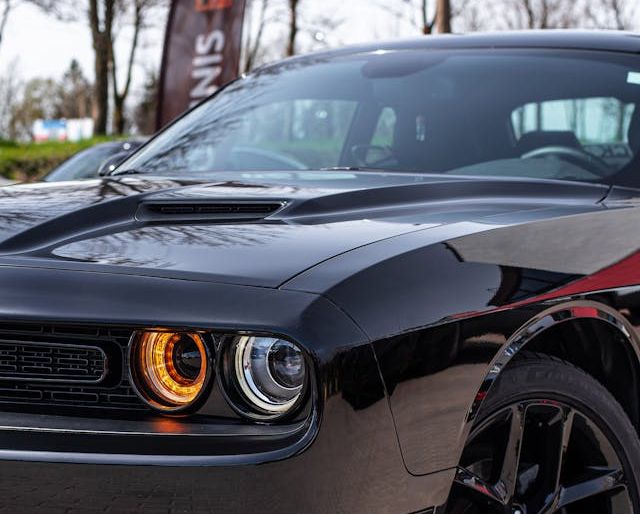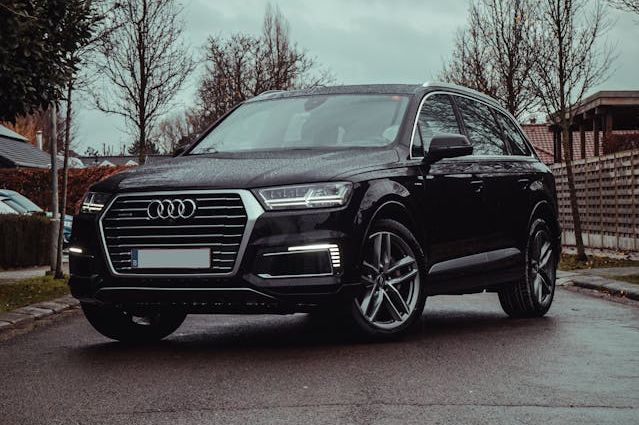
Is Mirror Tint Legal? Understanding Regulations and Implications
Mirror tint, also known as reflective or one-way tint, is a type of vehicle window finish that has rapidly risen to fame for its unique charm and superior performance. It’s famed for offering an increased degree of privacy and glare reduction, fostering a cooler vehicle interior even under sweltering conditions – a recipe for amplified comfort. This concoction of aesthetics and functionality thrusts mirror tint into the spotlight as an attractive option for numerous car owners, significantly boosting its growing popularity.
As the fascination with mirror tint broadens, potential consumers often share a mutual inquiry – “Is mirror tint legal?”. Grasping the diverse legal implications associated with using mirror tint across various territories becomes imperative due to its high level of privacy which could occasionally ignite safety apprehensions. Consequently, governing bodies around the globe have imposed regulations including restrictions on permissible levels of tint to ensure that safety isn’t compromised. Therefore resulting in different degrees legality for mirror tints worldwide and even within states and provinces.
The Science Behind Mirror Tint
The intriguing world of mirror tint, that we frequently observe adorning vehicle windows, springs from the foundational theorem of physics – reflection. This unique genre of tint is an amalgamation of numerous ultra-thin film layers, which are generously endowed with metals such as chromium or aluminum. The inherent charisma these metals boast is their ability to reflect light, a trait that not only births the mirrored semblance but also serves as a shield against natural light and UV rays.
An inquisitive mind might muse over “Is it possible to adorn a car with mirror tint?” A loud affirmation echoes in response. Mirror tints have become quite the rage among contemporary motorists owing to its dual benefits – augmented privacy and reduced internal heat build-up. However, don’t be fooled by its seemingly simple application process; it’s cloaked in complexity demanding professional finesse. For instance, meticulous layering of the film coupled with delicate handling are essential prerequisites for optimizing both performance and durability.
How Mirror Tint is Applied
In the realm of mirror tint application, one must acknowledge the intricacy and systematic methodology it entails. This task is typically undertaken by those steeped in the craft’s nuances. The process initiates with a meticulous purge of any window debris that could potentially thwart the smooth course of application. These adepts then proceed to carefully tailor-fit each piece of mirror tint film to match the window’s dimensions – an operation necessitating absolute precision for achieving flawless alignment.
The adhesive facet of this film is then tenderly affixed on the window surface, ensuring utmost vigilance against bubble formation as these can mar both aesthetic appeal and functional efficacy of said tint.
A question often echoing among those desiring to spruce up their vehicles pertains to ‘the legality status associated with colored mirror tints.’ Indubitably, laws governing mirror tints (especially color-specific), tend to fluctuate widely depending upon regional or state-centric guidelines. Therefore, prior embarking on such venture involving colored mirror tints; it would be prudent seeking counsel from a professional adept in local tint regulations’ interpretations. This ensures adherence to legal requirements and circumvents potential punitive measures or compulsory removal orders related to non-compliant tints.
Benefits of Using Mirror Tint on Vehicles
The boon of employing mirror tint on vehicles is underscored by its notable contribution to enhancing privacy and security. Its opaque characteristic weaves a one-way visual shield that curbs the visibility from outside into the vehicle. This unique feature actively dissuades intrusive gazes, thereby amplifying both privacy and safety aspects for the occupants or contents of a vehicle. Conversely, from within, mirror tint offers an unimpeded view, fostering safer driving conditions.
In tandem with these ocular advantages, mirror tint plays an indelible role in reducing UV rays exposure and heat accumulation. It adeptly reflects and absorbs substantial solar radiation thus regulating internal temperature – this prolongs upholstery lifespan while also setting up an energy-efficient environment conducive for air conditioning systems operating optimally.
Of note though is that the legality surrounding mirror tint usage isn’t universally constant but fluctuates across locales; taking Colorado as an example raises queries like “Is mirror tint illegal in Colorado?”. The regional lawmakers have set forth permission to use such tints provided it adheres strictly to their laid down criteria relating light darkness intensity and reflection properties.
Potential Drawbacks of Mirror Tint
While the application of mirror tints to your automobile may undoubtedly impart a glossy and modern aesthetic appeal, it’s vital to acknowledge an array of potential pitfalls that necessitate careful consideration against their apparent benefits. The query frequently posed by vehicle proprietors is, ‘Does mirror tint outshine regular tint?’
From one perspective, mirror tinting could indeed be viewed as superior due its ability to offer heightened privacy and superior heat reflection. However, flipping the coin reveals an opposite side where the reflective characteristic might inadvertently amplify glare – an issue that becomes particularly noticeable during night-time drives. This amplified glare may subsequently impede driver visibility or even serve as a distraction for fellow road users.
A secondary concern with opting for mirrored tinting lies within the realm of its installation process. In contrast to regular tints which are relatively straightforward in application terms, implementing a mirror tint demands greater precision coupled with advanced skills. Consequently, this raises labor costs associated with installation.
Additionally, compared to its regular counterpart, mirror tints are prone to scratches or damage thereby necessitating meticulous maintenance practices. Hence drivers who find themselves drawn towards this particular window-tinting option should remain cognizant about these prospective downsides related not only to application but also durability plus overall impact on driving conditions.
Regulation of Window Tints: A General Overview

The regulations that govern window tinting are a bewildering array of disparate rules, differing wildly from one location to the next. They’re constructed on an eclectic mix of justifications – aesthetic predilections and privacy concerns find themselves shoulder-to-shoulder with practical considerations such as glare curtailment, UV exposure mitigation, and temperature control.
Typically, these laws specify the minimum percentage of visible light transmission (VLT) – essentially dictating how much light should be able to penetrate through your car’s windows. It’s a complex juggling act between maintaining personal privacy while ensuring road safety isn’t compromised.
But it doesn’t stop there; the labyrinthine nature of these rules extends further into color stipulations for tints, reflectivity requirements and even which specific windows may or may not be tinted. Sometimes, restrictions hinge upon seemingly unrelated factors such as driver age or medical conditions. For example, certain regions might ban front windshield and side window tinting altogether in order to preserve optimum visibility for drivers.
In view of this vast divergence in legislation across different jurisdictions, vehicle owners are encouraged – no urged – to gain familiarity with their local laws regarding window tinting lest they run afoul unknowingly. The ripple effects can lead straight into legal complications that could’ve been easily avoided.
To distill this complex array of window tinting regulations, it can be helpful to break down the key areas that are typically addressed in these laws:
- Visible Light Transmission (VLT): This is a measure of how much light should be able to penetrate through your car’s windows. The minimum percentage varies from one jurisdiction to another.
- Color and Reflectivity: Certain regions have specific stipulations about the color and reflectivity of window tints. For instance, some places prohibit metallic or mirrored tints due to their potential impact on visibility for other drivers.
- Specific Window Restrictions: Some laws dictate which windows may be tinted. Front windshields and side windows are often subject to stricter rules aimed at preserving optimal visibility for drivers.
- Additional Factors: At times, additional factors such as driver age or medical conditions might influence the restrictions imposed on window tinting. In certain cases, exemptions may be granted based on medical needs.
In conclusion, given the labyrinthine nature of these rules across different jurisdictions:
- Vehicle owners must familiarize themselves with local laws regarding window tinting.
- Breach of these regulations could lead into legal complications that could’ve been easily avoided.
The best practice would always involve consulting with a professional installer who understands regional requirements before proceeding with any form of window tint application – ensuring both compliance with law and personal satisfaction.
Mirror Tint Laws Vary by State and Region
Much in the vein of any motor vehicle personalization, the employment of mirror tint is contingent on an array of regulations that can swing dramatically based on jurisdiction. Certain states adopt a laxer stance, granting more leeway regarding window tinting. Conversely, some uphold stringent rules entirely banning mirror tints or enforcing strict boundaries on their application. These disparities arise from varying interpretations of privacy necessity, safety measures and aesthetic preferences; often deeply rooted within state laws.
To successfully traverse through these legal subtleties surrounding mirror tints, it’s advisable for motorists to acquaint themselves with specific laws governing window tinting at state level or even within county or city limits. Ordinarily, such regulations lay down the law about maximum permissible tint percentage alongside addressing reflectiveness levels and designating which windows are eligible for tinting. Flouting these guidelines could invite penalties ranging from fines to graver repercussions. Henceforth, it remains prudent for vehicle owners to be well-versed with relevant legislations before making a decision in favor of mirror tints.
FAQ
Mirror tint is a style of window laminate that presents a reflective façade, lending windows an illusion akin to mirrors. Its appeal lies in its visual allure coupled with its capacity to lessen heat and solar glare.
The functionality of mirror tint hinges on reflection rather than absorption of sunlight. This specialized film incorporates microscopic metal particles designed to reflect sunlight, thereby diminishing the volume of light and heat infiltrating the vehicle.
To attach mirror tint, one must initially cleanse the pane meticulously. Subsequently, an adhesive stratum is applied onto which follows the application of the actual tint film. After this stage, it is crucial to smooth out any inconsistencies or bubbles within the film layer.
Mirror tints have numerous benefits such as diminishing sunlight invasion into vehicles; consequently aiding in maintaining cooler interiors whilst shielding against UV radiation damage. Furthermore, they offer additional privacy due to their obstructive nature making it challenging for external views into vehicles.
The predominant concern associated with utilizing mirrored tints is compromised visibility especially during nocturnal hours. Also worth noting is that these films may not be legally permissible universally and could necessitate permits or inspections for usage authorization.
Legislations surrounding window-tinting are highly variable across states or even distinct regions within individual states themselves.They typically mandate a certain level Visible Light Transmission (VLT) percentage – i.e.,the amount of light capable passage through employed tints – while also potentially stipulating rules about tint colour and reflective properties.
Laws concerning mirror-tinting vary greatly from state to state, region to region. Some jurisdictions may outright ban its use, whilst others might have certain stipulations surrounding it. To ensure compliance with all legalities, one should consult local law enforcement agencies or the Department of Motor Vehicles for specifics on regulations in their area.

